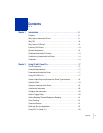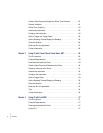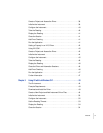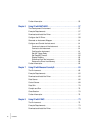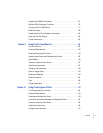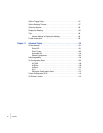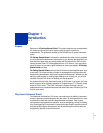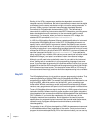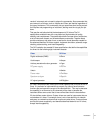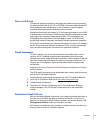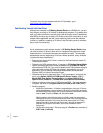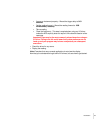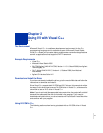
10
Chapter 1
•
•
•
•
•
•
Starting in the 1970s, programmers used device-dependent commands for
computer control of instruments. But lack of standardization meant even two digital
multimeters from the same manufacturer might not use the same commands. In
the early 1990s a group of instrument manufacturers developed Standard
Commands for Programmable Instrumentation (SCPI). This defined set of
commands for controlling instruments uses ASCII characters, providing some
basic standardization and consistency to the commands used to control
instruments. For example, when you want to measure a DC voltage, the
standard SCPI command is “MEASURE:VOLTAGE:DC?”.
In 1993, the VXIplug&play Systems Alliance created specifications for instrument
drivers called VXIplug&play drivers. Unlike SCPI, VXIplug&play drivers do not
specify how to control specific instruments; instead, they specify some common
aspects of an instrument driver. By using a driver, you can access the instrument
by calling a subroutine in your programming language instead of having to format
and send an ASCII string as you do with SCPI. With ASCII, you have to create and
send the instrument the syntax “
MEASURE:VOLTAGE:DC?
”, then read back a
string, and build it into a variable. With a driver you can merely call a function called
MeasureDCVoltage( ) and pass it a variable to return the measured voltage.
Although you still need to be syntactically correct in your calls to the instrument
driver, making calls to a subroutine in your programming language is less error
prone. If you have been programming to instruments without a driver, then you are
probably all too familiar with hunting around the programming guide to find the right
SCPI command and exact syntax.
You also have to deal with an I/O library to
format and send the strings, and then build the response string into a variable.
Why IVI?
The VXIplug&play drivers do not provide a common programming interface. That
means programming a Keithley DMM using VXIplug&play still differs from
programming an Agilent DMM. For example, the instrument driver interface for one
may be ke2000_read while another may be hp34401_get or something even
farther afield. Without consistency across instruments manufactured by different
vendors, many programmers still spent a lot of time learning each individual driver.
To carry VXIplug&play drivers a step (or two) further, in 1998 a group of end users,
instrument vendors, software vendors, system suppliers, and system integrators
joined together to form a consortium called the Interchangeable Virtual Instruments
(IVI) Foundation. If you look at the membership, it’s clear that many of the
foundation members are competitors. But all agreed on the need to promote
specifications for programming test instruments that provide better performance,
reduce the cost of program development and maintenance, and simplify
interchangeability.
For example, for any IVI driver developed for a DMM, the measurement command
is IviDmmMeasurement.Read, regardless of the vendor. Once you learn how to
program the commands specified by IVI for the instrument class, you can use any




